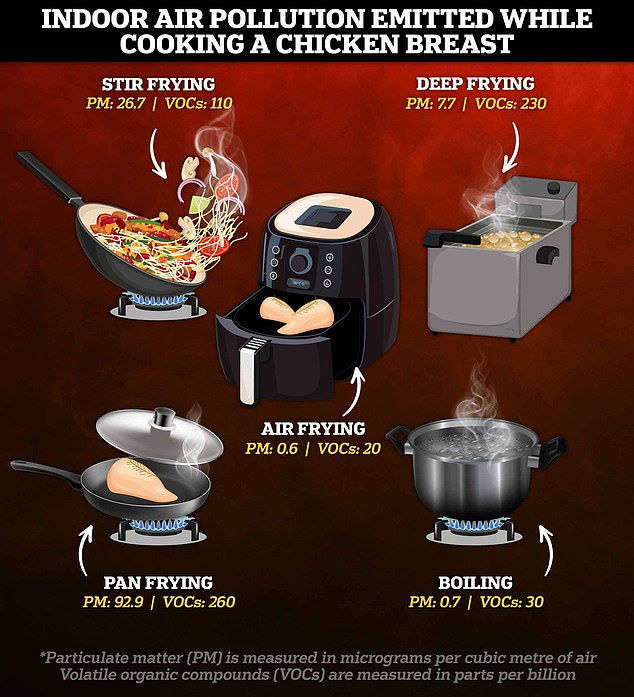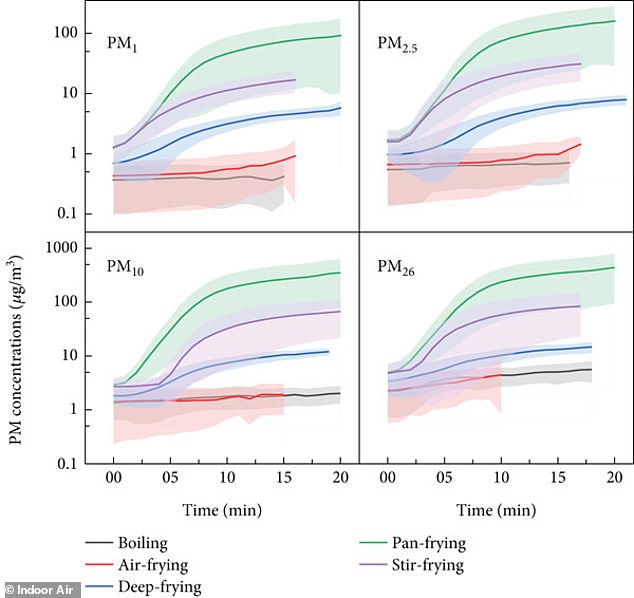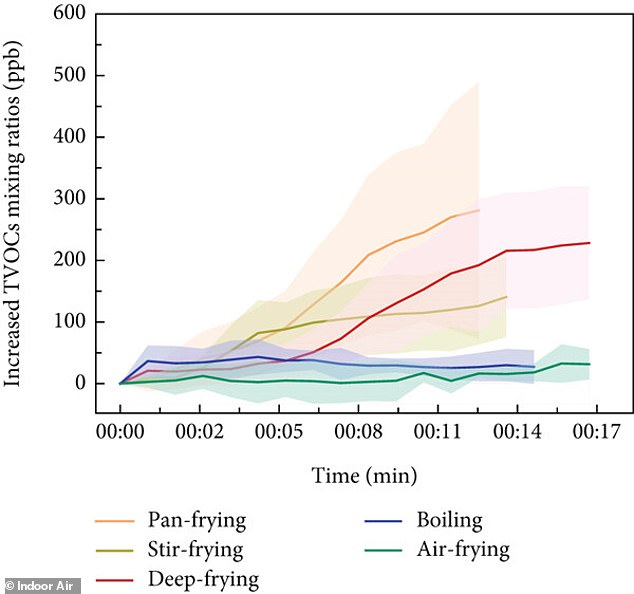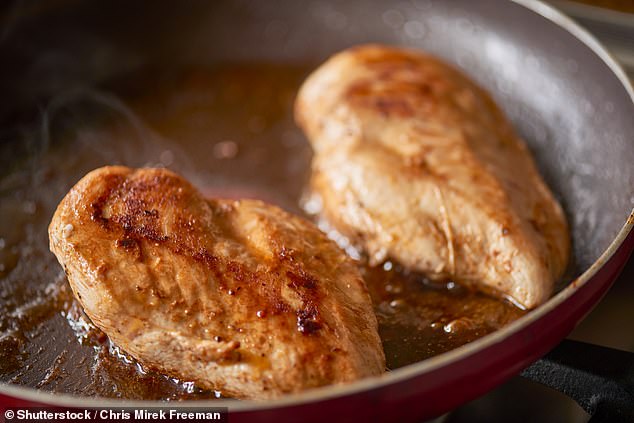Research shows that using an air fryer provides a surprising health benefit – and it has nothing to do with your food
It is already known that air fryers are cheaper and more effective than traditional ovens.
And now a study has revealed a surprising health benefit to using the trendy stoves in your kitchen.
Researchers from the University of Birmingham say air fryers produce a small portion of the indoor air pollution emitted by other cooking methods.
In their research, the team cooked a chicken breast using five popular methods, including boiling, air frying and pan frying.
Their analysis found that air frying produced the fewest particulate matter (PM) and volatile organic chemicals (VOCs) of all five methods.
Previous research has shown that indoor air pollutants can increase the risk of several health problems.
“On average, people spend more than 80% of their time indoors, with cooking emissions contributing significantly to indoor air pollution,” the researchers wrote in their study.
‘Exposure to indoor pollutants can cause various health effects, such as acute symptoms and chronic diseases, such as heart failure; cardiovascular disease; cerebrovascular diseases; neurodegenerative diseases; lung diseases including emphysema and bronchitis; irritations in the respiratory tract and eyes; respiratory infections and asthma attacks; and increased risks of cancer and mortality, especially in vulnerable people.”
It is already known that air fryers are cheaper and more effective than traditional ovens. And now a study has revealed a surprising health benefit to using the trendy stoves in your kitchen

In their research, the team cooked a chicken breast using five popular methods, including boiling, air frying and pan frying. Their analysis found that air frying produced the fewest particulate matter (PM) and volatile organic chemicals (VOCs) of all five methods.
Cooking is known to be a major source of indoor air pollution.
However, until now, little research has been done on indoor air pollution caused by frying.
In their new study, published in Indoor airthe team wanted to finally set the record straight.
The researchers cooked a chicken breast in a well-controlled research kitchen using five different methods: pan-frying, stir-frying, fat-frying, boiling and air-frying.
During the cooking process, the researchers monitored the levels of two indoor air pollutants in the surrounding air: particulate matter and VOCs.
Particulate matter contains microscopic solid particles or liquid droplets that are so small that they can be inhaled.
Volatile organic compounds (VOCs), meanwhile, are emitted as gases and include a variety of harmful chemicals.
Their analysis found that pan-frying was the most polluting cooking method, with 92.9 micrograms of particulate matter per cubic meter of air and 260 parts per billion of VOCs released.

Particulate matter contains microscopic solid particles or liquid droplets that are so small that they can be inhaled. Their analysis showed that pan-frying is the most polluting cooking method, with 92.9 micrograms of particulate matter per cubic meter of air.

Volatile organic compounds (VOCs), meanwhile, are emitted as gases and include a variety of harmful chemicals
Frying was not much better in terms of VOCs: it released 230 parts ber billion, in addition to 7.7 micrograms of particulate matter per cubic meter of air.
Stir-frying was the second worst for PM, with 26.7 micrograms per cubic meter of air released, along with 110 parts per billion VOCs.
And while you might think that cooking would be the least polluting method, the researchers found that this was not the case for PM or VOCs.
Cooking produced 0.7 micrograms of particulate matter per cubic meter of air and 30 parts per billion VOCs.
However, air frying produced only 0.6 micrograms of PM per cubic meter of air and 20 parts per billion VOCs.
Professor Christian Pfrang, senior author of the study, said: ‘There are a number of factors that will influence the level of pollution from cooking in addition to the method used, including the amount of oil used and the temperature of the stove.
‘What we can say with certainty, however, is that improving ventilation in kitchens by opening windows or using exhaust fans will help disperse pollutants and reduce personal exposure.’
As part of the study, the researchers continued to measure contamination after the cooking process was complete.

Their analysis found that pan-frying was the most polluting cooking method, releasing 92.9 micrograms of particulate matter per cubic meter of air and 260 parts per billion VOCs (stock image)
It showed that the contaminants lingered in the kitchen for over an hour after the food was prepared, despite the cooking itself taking only 10 minutes.
‘It is also very important to understand that particles remain in the air for a long time after you have finished cooking,’ added Professor Pfrang.
‘So continuing to ventilate, or leaving the extractor fans on for a while, will really help to prevent the build-up of this indoor pollution and reduce the chance of the pollutants being transported and spread throughout the home, with the associated higher personal risks. exposures.”
Air fryers are not only the least polluting, but research from Which? has shown that they are also three times cheaper than a conventional oven.
Emily Seymour, which one? Energy Editor said: ‘Energy bills are a real concern for millions of households across the country, especially when many are already feeling the pressure of the cost of living, and cooking is one of the daily costs that really adds up over time.
‘There has been a surge of interest in air fryers and smaller cookers in recent months, and our research shows that in some cases the hype may be justified as we have found that these products cost less to prepare certain foods than conventional ones. ovens.
‘However, the cost savings are quickly lost if you have to cook more than one batch, so if you’re cooking large quantities you’ll still be better off using your oven.
‘But for quick, small meals it’s worth trying out the alternatives.’
